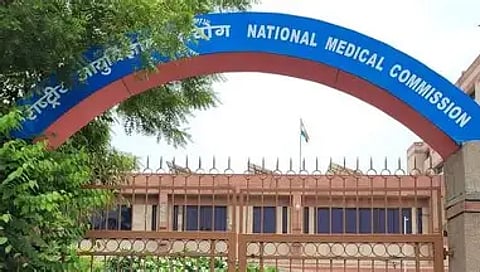

In a significant reform aimed at boosting medical education capacity, the Post Graduate Medical Education Board (PGMEB) under the National Medical Commission (NMC) has issued new faculty qualification rules that allow non-teaching government hospitals with more than 220 beds to be designated as teaching institutions.
The newly notified Medical Institutions (Qualifications of Faculty) Regulations, 2025 are expected to address faculty shortages and accelerate the growth of undergraduate (UG) and postgraduate (PG) medical seats across the country.
Wider Faculty Pool:
Doctors working in non-teaching hospitals can now be appointed directly as:
Associate Professors with 10 years of specialist experience.
Assistant Professors with 2 years of experience — without mandatory senior residency.
Super-Specialty Alignment:
Faculty with super-specialty qualifications currently posted in broad specialty departments can now be officially designated as faculty in their corresponding super-specialty disciplines.
Rationalised Bed Requirements:
The number of beds required per teaching unit has been revised for various specialties, making it easier to qualify as a teaching hospital.
Relaxed PG Course Criteria:
PG courses can now be launched with just two faculty members and two PG seats, easing the earlier requirement of three faculty and a senior resident.
Simultaneous UG and PG Launch:
New government medical colleges can now start UG and PG programs concurrently — helping to fast-track the training of both doctors and faculty.
These changes align with the Union Government’s plan to add 75,000 new medical seats over the next five years. A key aspect of this expansion is the use of smaller, existing hospitals to serve as teaching hubs — an approach long hindered by rigid faculty eligibility rules.
The NMC stated that the updated norms move away from rigid service tenure requirements and instead focus on teaching competency, clinical experience, and academic merit.
“These regulations unlock the human resource potential within the government healthcare system and allow for optimal use of existing infrastructure,” the NMC noted in its announcement.
The reforms aim to bridge a critical gap in faculty availability, long considered a major bottleneck in scaling India’s medical education system.